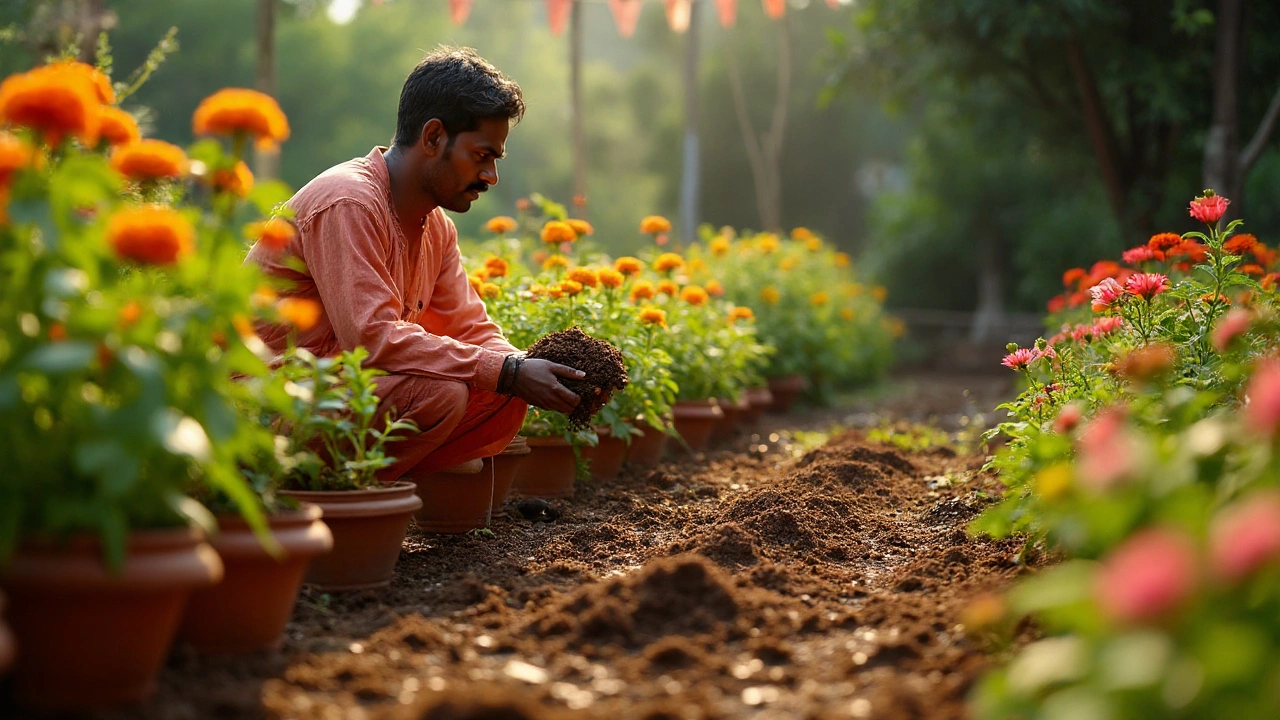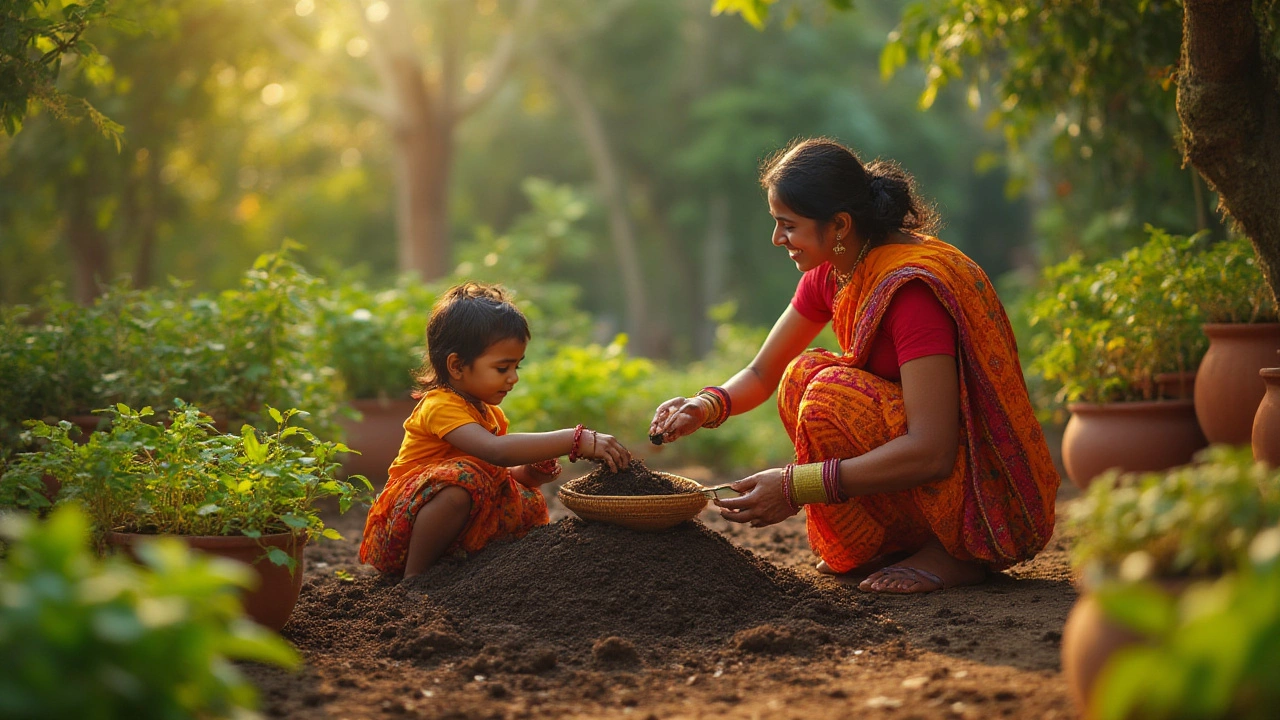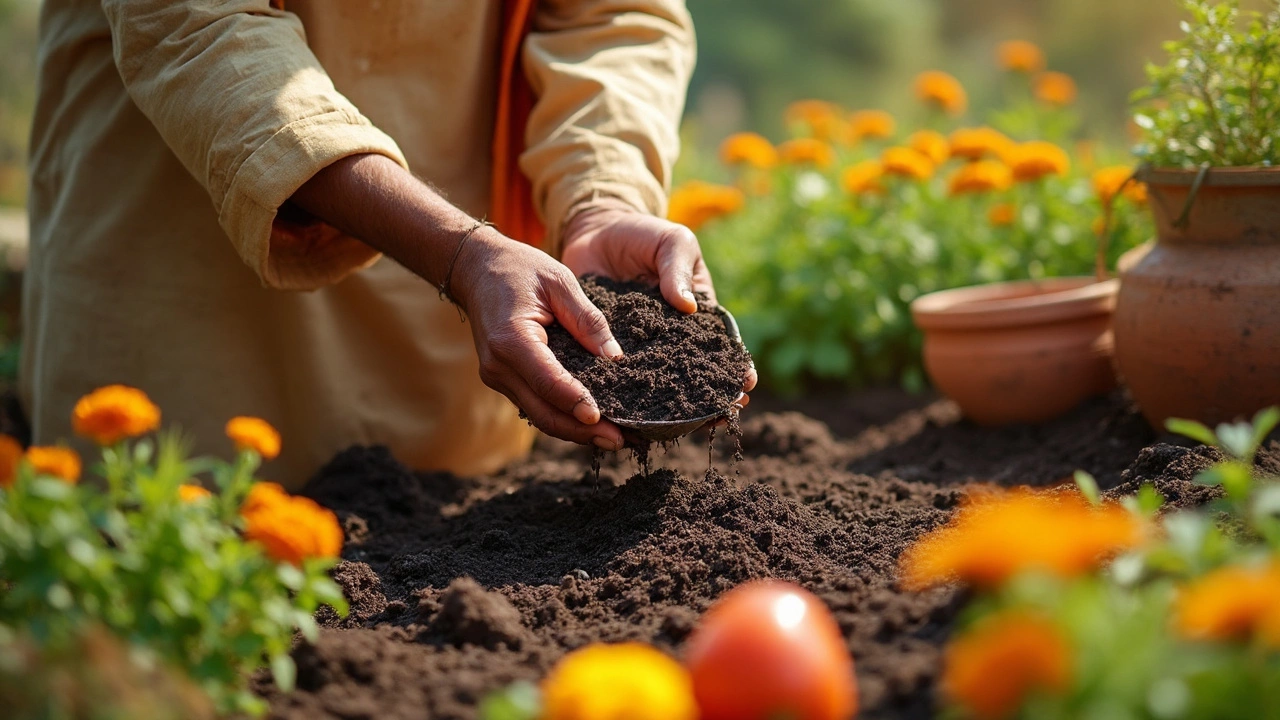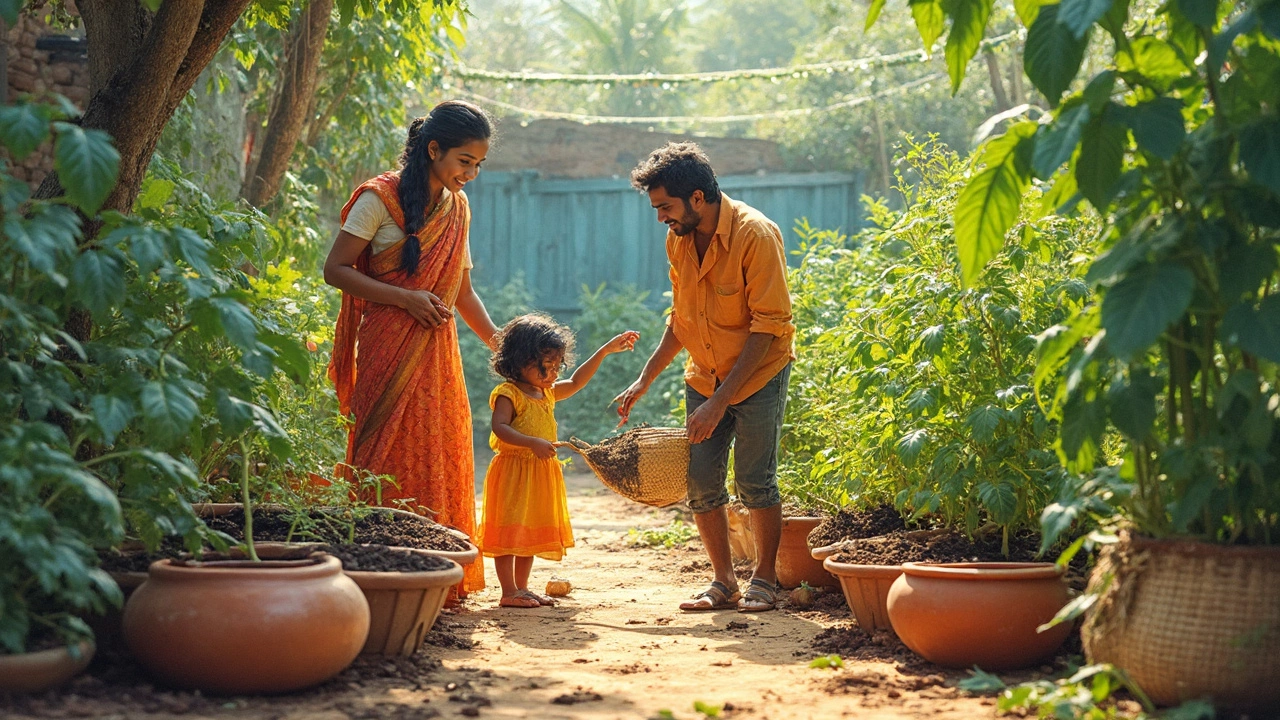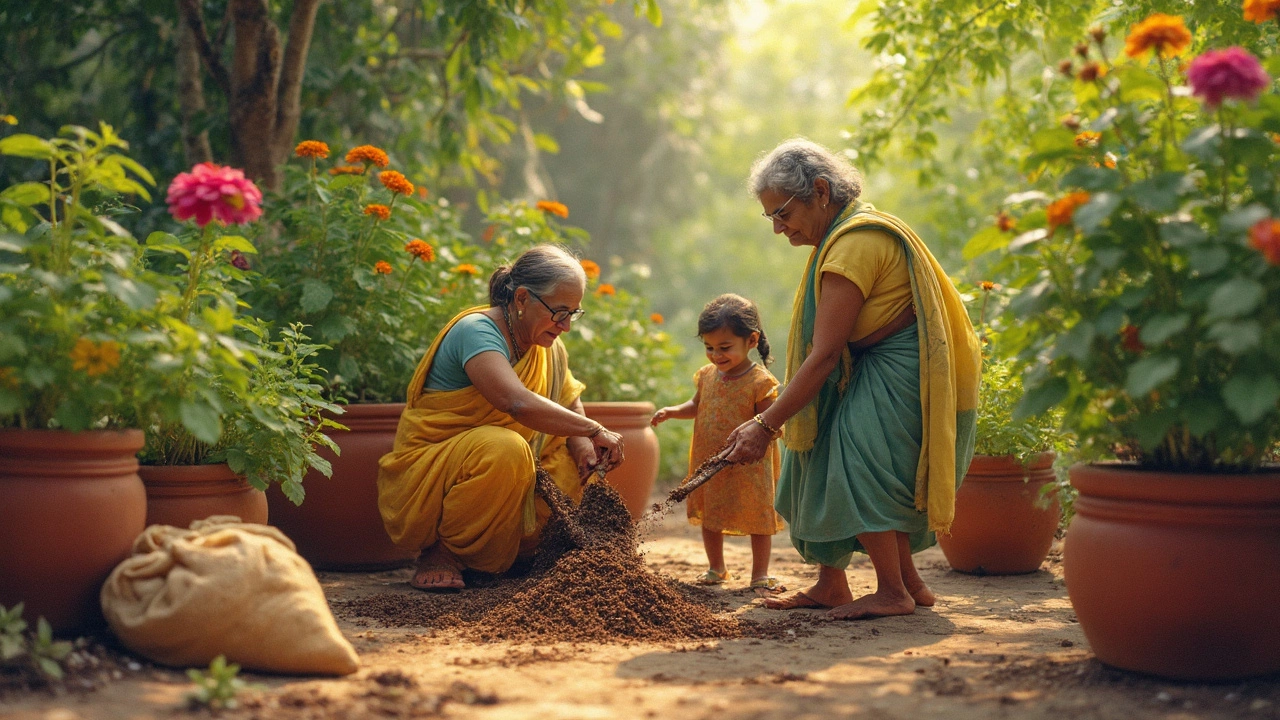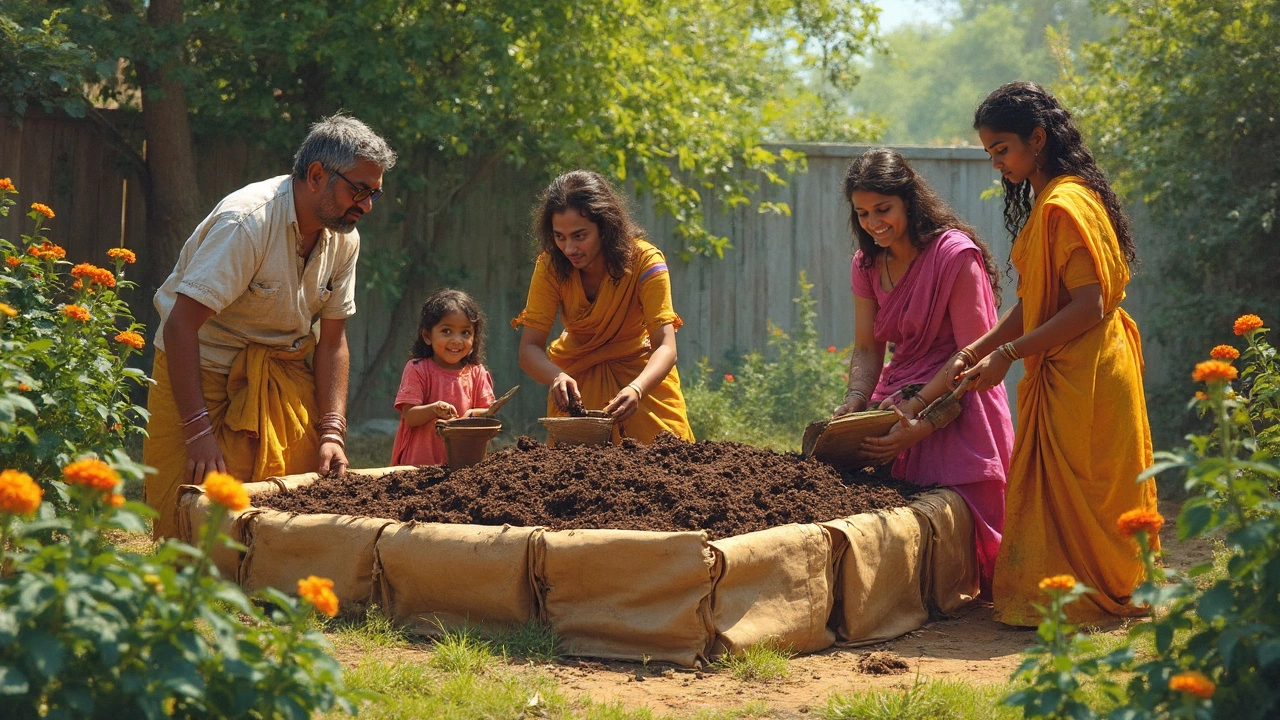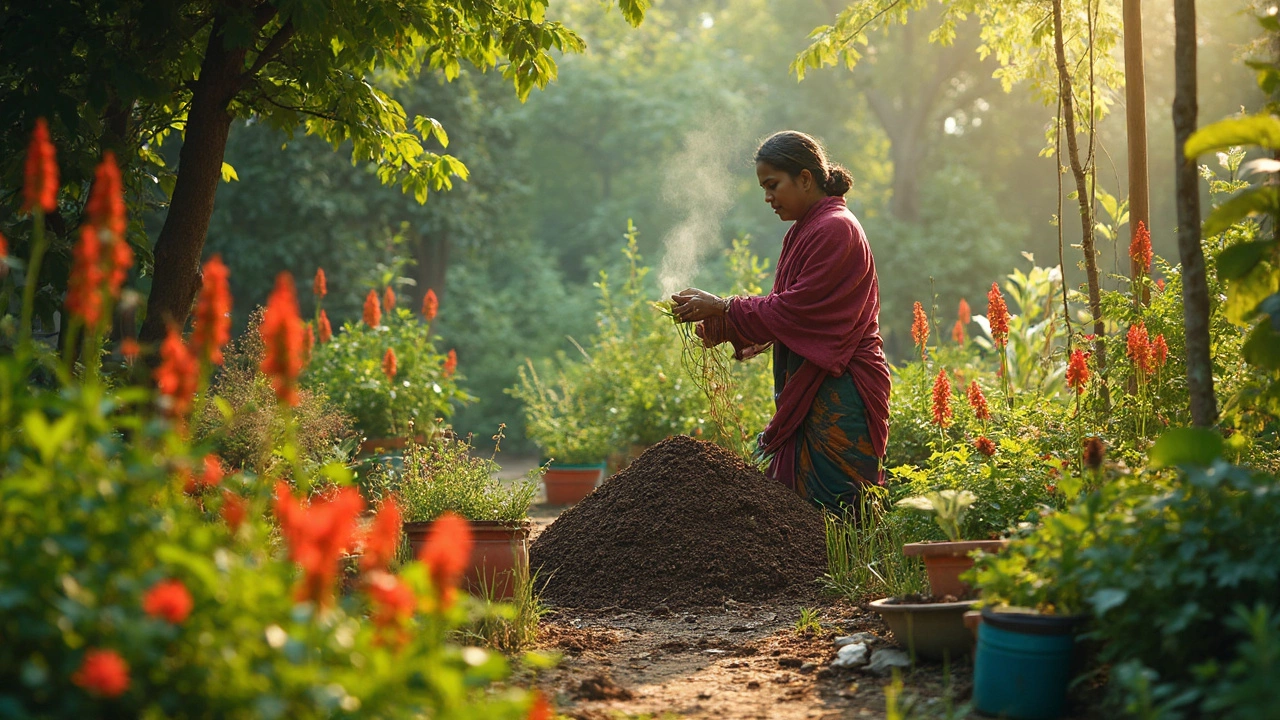Soil Improvement Made Easy for Indian Gardens
Good soil is the backbone of any thriving garden, but many Indian gardeners struggle with heavy clay, sandy patches, or low organic matter. The good news? You don’t need expensive products or a Ph.D. in agronomy to fix it. In the next few minutes you’ll learn practical, low‑cost steps that turn tired dirt into a plant‑loving medium.
Easy DIY Amendments You Already Have
First, look around your kitchen and yard. Kitchen scraps like vegetable peels, coffee grounds (use sparingly), and tea leaves add valuable organic matter when composted. Worm castings are a powerhouse – a handful mixed into the top few inches feeds microbes and improves texture. If you have a backyard, collect dry leaves or shredded newspaper; they break down slowly and keep soil loose.
When you add these materials, aim for a 1:3 ratio of amendment to existing soil. For a 10‑square‑foot bed, that’s about 2‑3 buckets of compost or castings. Mix it in with a garden fork, not a shovel, to avoid compacting. You’ll notice better drainage and a richer, darker color within a few weeks.
Choosing the Right Materials for Indian Soils
India’s climate varies, so tailor your amendments. In the humid north, sand helps heavy clay drain faster, but use coarse sand, not beach sand, to prevent salt buildup. In dry, sandy regions, add more organic matter – cow‑dung manure, green leaf mulch, or well‑rotted Bokashi. These lock moisture in and feed the soil during the scorching summer months.
If you’re dealing with water‑logged soils during monsoon, incorporate small amounts of perlite or rice hulls. They create air pockets that keep roots from drowning. Natural alternatives like crushed brick or sawdust work just as well and are easier to find locally.
Don’t forget to test your soil pH occasionally. A quick kitchen‑spoon test with vinegar (acidic) or baking soda (alkaline) tells you if you need lime or sulfur. Most vegetables thrive in a pH of 6‑7, and adjusting it early saves you from stunted growth later.
Finally, protect your improvements with a mulch layer. A 2‑inch blanket of straw, dried leaves, or shredded coconut husk keeps weeds down, retains moisture, and adds a slow‑release nutrient boost as it breaks down.
Putting these steps together is simple: start with a basic compost mix, add region‑specific tweaks like sand or rice hulls, check pH, then finish with mulch. Within a season you’ll see stronger roots, greener leaves, and better yields – all without breaking the bank.
Ready to give your garden soil a makeover? Grab a bucket, a fork, and some kitchen scraps, and start mixing today. Your plants will thank you, and your wallet will stay happy too.
How to Amend Hard Garden Soil for Better Plant Growth
Hard garden soil won't support healthy plants - but you can fix it. Learn how to amend compacted, clay-heavy soil with compost, cover crops, and smart techniques that work without expensive tools or chemicals.
Plants That Hate Coffee Grounds: What Not to Feed Your Garden
Wondering which plants can’t handle coffee grounds? Get the facts before using this ‘miracle’ in your garden—many plants will thank you for leaving it out.
How to Loosen Heavy Garden Soil: Simple Additives for Better Texture
Heavy, compacted soil can suffocate plants. Discover easy ways to lighten your garden’s soil—add compost, sand, and more for healthier roots.
Bulk Up Garden Soil: Real Ways to Make Your Dirt Work Harder
If your plants are struggling or your garden beds look tired, your soil is usually the culprit. This article shows real-life ways to add muscle to your garden soil so plants grow stronger and happier. Expect practical tips, science you can use, and a few secrets experienced gardeners swear by. No fluff, just clear answers for getting better soil. Time to start growing healthier, better crops.
Cheapest Way to Amend Garden Soil: Simple Fixes That Actually Work
Looking to make your garden soil better without spending a fortune? This article cuts through the fluff and digs into only the most effective, cheapest methods to boost your soil's health. You'll get tricks that use stuff you probably already have at home or can snag for free. Whether your soil is too sandy or packed like clay, these fixes will help your plants thrive. Bonus: most tips don't even require heavy lifting.
Vegetable Garden Soil: What to Add for Healthy Growth
Starting a vegetable garden? Your soil is the real MVP, and it needs more than just dirt to thrive. This article breaks down exactly what to add to your soil, from compost to smart DIY fixes, so your veggies actually stand a chance. Skip the guesswork—get real tips for better harvests. You'll even learn how to spot if your soil is missing something important.
Worm Castings: The Secret Weapon for Better Garden Soil
Worm castings, often called nature's best fertilizer, can transform tired soil into a thriving home for your plants. They’re packed with nutrients, improve the soil structure, and even help your garden fight off pests and diseases. This article breaks down how worm castings work, why they stand out from other soil improvers, and how you can use them for bigger, healthier harvests. You'll pick up practical tips and learn some surprising advantages that worm castings have over standard compost. Get ready to see your plants grow stronger with less effort.
How to Make Bad Dirt Good: Simple Fixes for Tired Garden Soil
Struggling with hard, lifeless, or sandy soil? Turning bad dirt into rich, productive garden soil is easier than you think. This article covers concrete tips for fixing stubborn dirt, signs your soil needs help, and how anyone can grow better plants with a few cheap tricks. You’ll learn how compost, cover crops, and some everyday kitchen scraps can make a bigger difference than most store-bought mixes. Skip the guesswork and follow these practical steps to healthier garden beds.
How to Fill a Raised Garden Bed Cheaply: Soil Hacks That Save Big
Need to fill up a raised garden bed without dropping a ton of cash? This article covers dirt-cheap methods to get the job done, including what to use as bottom layers, where to get free or cheap soil amendments, and how to boost your soil quality on a shoestring. You’ll learn which materials are safe and which to skip. Save cash, recycle smart, and grow better plants with easy-to-follow tips.
Best Materials to Put in the Bottom of a Raised Garden Bed for Healthy Soil
Not sure what to put at the bottom of a raised garden bed? This article breaks down the best materials to boost soil health, improve drainage, and keep weeds at bay. Learn the dos and don’ts for a thriving garden setup. Get practical tips that save time, money, and hassle. Create your raised bed right from the start.
How Often Should I Fertilize Tomatoes? Simple Timing for Big Harvests
Getting the timing right for fertilizing tomatoes can mean way more fruit and fewer plant headaches. This guide breaks down exactly when and how often tomatoes need feeding to keep them healthy and productive. You'll learn how to spot the signs that your tomatoes are hungry, and avoid common fertilizer mistakes that kill yields instead of boosting them. We’ll also look at quick, practical tips to handle real garden situations, like container tomatoes or tricky soils. Tomato success starts with the right feeding routine—and you’ll find all the need-to-know details here.
How to Make Your Own Cheap Soil for Gardening
Making your own garden soil doesn't have to cost a fortune. By using everyday materials like kitchen scraps, fallen leaves, and grass clippings, you can create a nutrient-rich mix that rivals any store-bought option. Discover simple tips and tricks to enhance soil quality and maximize plant growth while saving money. Perfect for home gardeners looking to boost their green space without breaking the bank.
- 1
- 2
About
Soil Improvement
Latest Posts
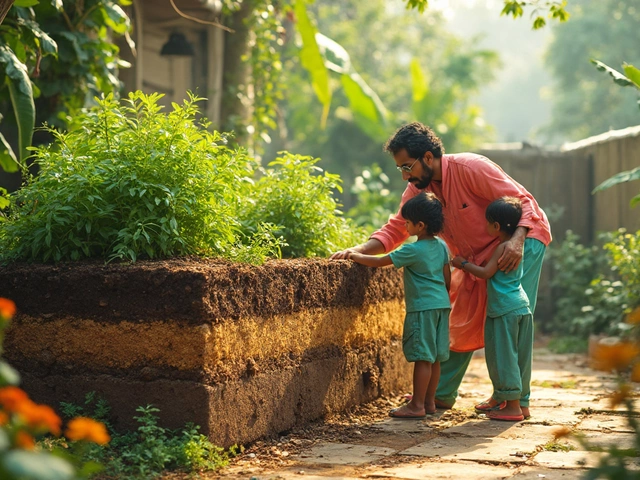

Why Tomato Is Costly in India?
By Alden Thorne Nov 11, 2025

Should You Use Landscape Fabric Under Raised Beds?
By Alden Thorne Mar 1, 2025
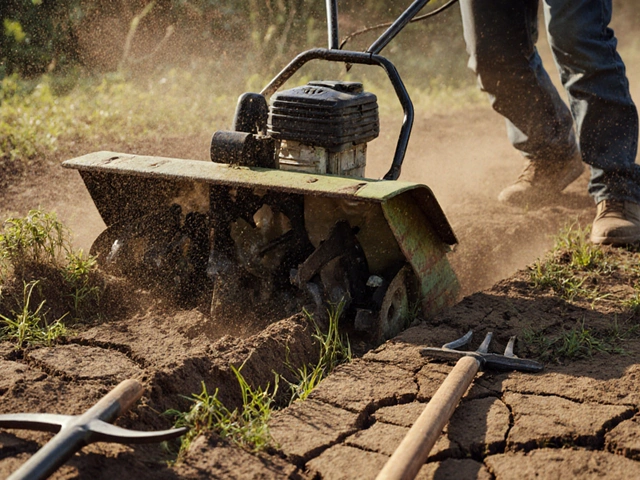
Will a Tiller Break Up Hard Soil? Here's What Actually Works
By Alden Thorne Nov 18, 2025


